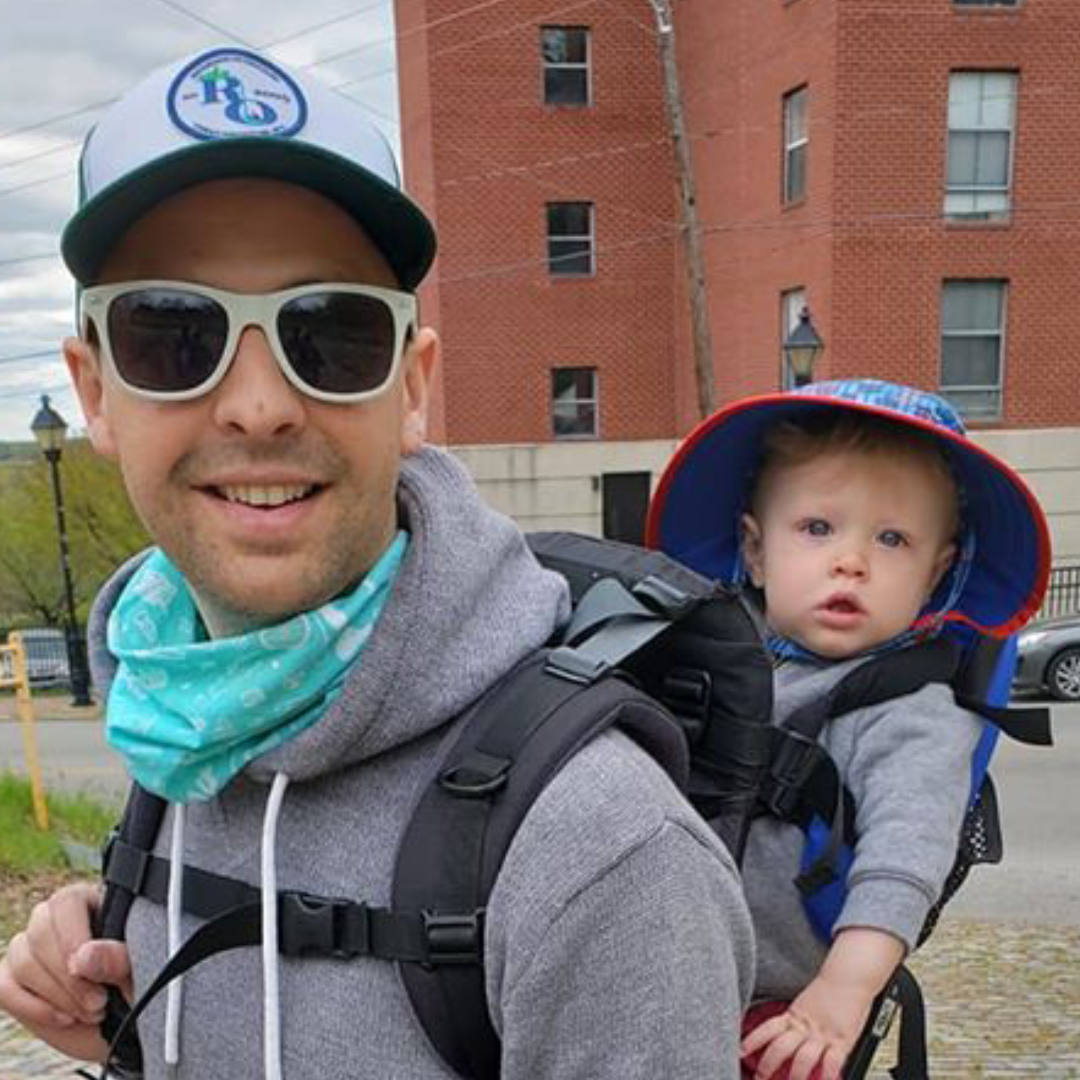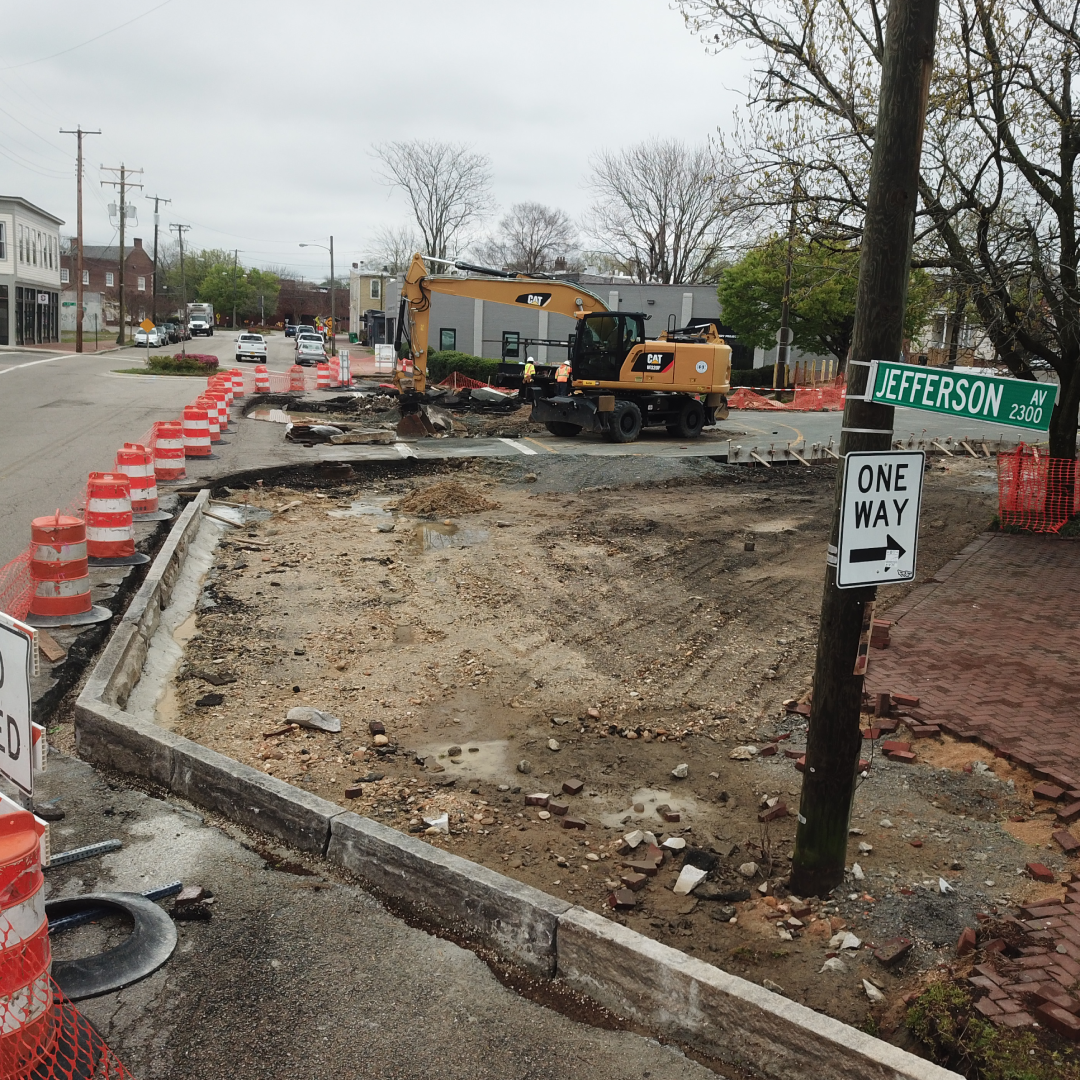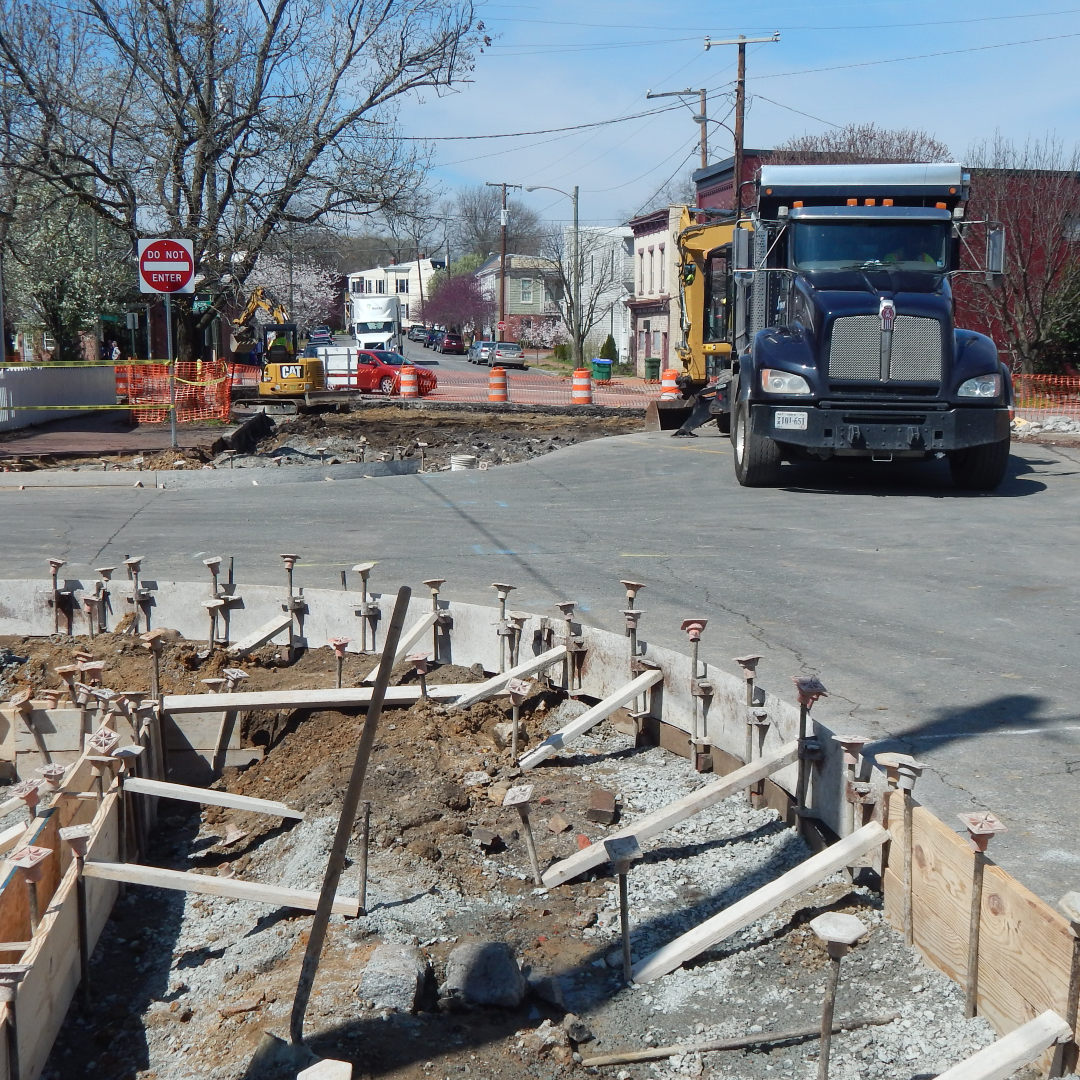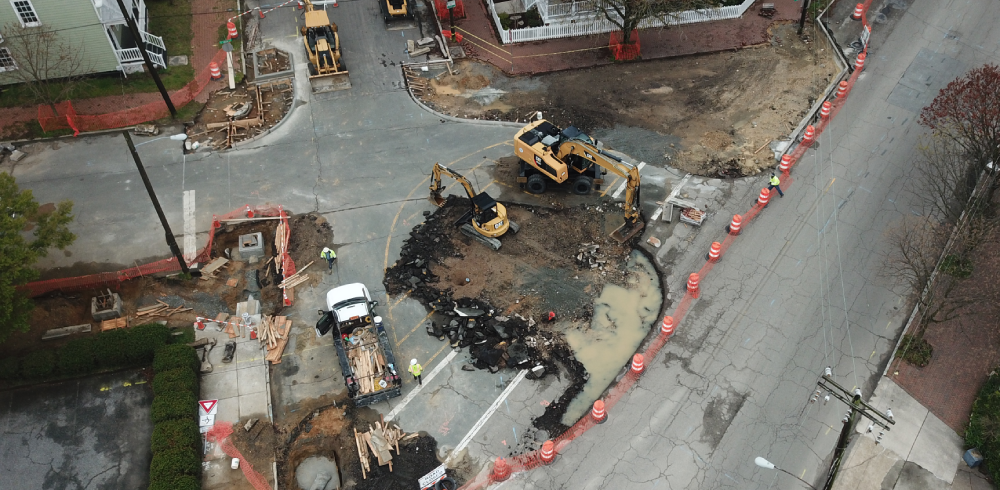Working from my home in Richmond’s Church Hill neighborhood during this period of social distancing has given me the opportunity to take daily walks with my dog and 10-month-old son. We typically walk to one of Church Hill’s wonderful parks, such as Libby Hill Park or Jefferson Park. Sometimes we walk as far as Great Shiplock Park in the James River Park System to spend time by the James River. Our daily walks give me an opportunity to enjoy green infrastructure that has been integrated into the city over the course of its history and connect with nature.

What is green infrastructure and why is it important?
Green infrastructure includes things like rain gardens, green roofs, street trees and natural areas that enhance our built environment for the benefit of humans and the ecosystem of which we are a part. Green infrastructure contributes to healthier communities by absorbing stormwater before it enters our rivers and streams, capturing carbon dioxide emissions, and mitigating the urban heat island effect. It also provides habitat for wildlife living among us.

 During a recent walk with my son, we stumbled upon construction on Jefferson Avenue near Union Market. We observed asphalt being busted up by workers from Simons Contracting Co., Inc. operating construction equipment. Jefferson Avenue is a busy transportation corridor that separates Church Hill from Union Hill. It extends from Jefferson Park at N. 21st Street to a traffic circle at N. 25th Street, near Sub Rosa Bakery. The corridor is missing some street trees and is not the safest place to walk or ride a bicycle.
During a recent walk with my son, we stumbled upon construction on Jefferson Avenue near Union Market. We observed asphalt being busted up by workers from Simons Contracting Co., Inc. operating construction equipment. Jefferson Avenue is a busy transportation corridor that separates Church Hill from Union Hill. It extends from Jefferson Park at N. 21st Street to a traffic circle at N. 25th Street, near Sub Rosa Bakery. The corridor is missing some street trees and is not the safest place to walk or ride a bicycle.
The construction activity we observed is the first phase of a green infrastructure plan championed by the Jefferson Avenue Taskforce. In 2015, the City of Richmond used technical assistance provided by the Greening America’s Capitals Program to redesign Jefferson Avenue in an effort to create a safer and greener corridor for residents of Church Hill and Union Hill. The resulting plan, Greening Jefferson Avenue, reinvents the Jefferson Avenue corridor using an approach called “Complete Streets” that will add green infrastructure and improve pedestrian and bicyclist mobility and safety. Greening Jefferson Avenue served as the basis for an initial funding request of $500,000, which was included in the City of Richmond’s adopted Capital Improvement Plan two years ago.
The first phase of the Jefferson Avenue Corridor Improvements project will result in a safer transportation corridor, less impervious asphalt, and more green infrastructure in the vicinity of N. 24th Street. Less asphalt and more street trees and plants in the corridor will contribute to a healthier built environment that benefits both residents and wildlife.
 The James River Association is an advocate of green infrastructure projects in localities across the James River watershed. From green infrastructure planning initiatives to rolling up our sleeves and planting street trees, we recognize the many benefits of green infrastructure projects and embrace our role in helping to achieve green infrastructure goals. In the coming weeks, we look forward to sharing stories and information about some of our green infrastructure projects that are improving the health of communities and the James River.
The James River Association is an advocate of green infrastructure projects in localities across the James River watershed. From green infrastructure planning initiatives to rolling up our sleeves and planting street trees, we recognize the many benefits of green infrastructure projects and embrace our role in helping to achieve green infrastructure goals. In the coming weeks, we look forward to sharing stories and information about some of our green infrastructure projects that are improving the health of communities and the James River.
Justin Doyle is the James River Association’s Community Conservation Manager and a member of the Jefferson Avenue Task Force. The James River Association’s Community Conservation Program promotes conservation and responsible stewardship of our natural resources and helps communities realize the benefits of a healthy James River.

